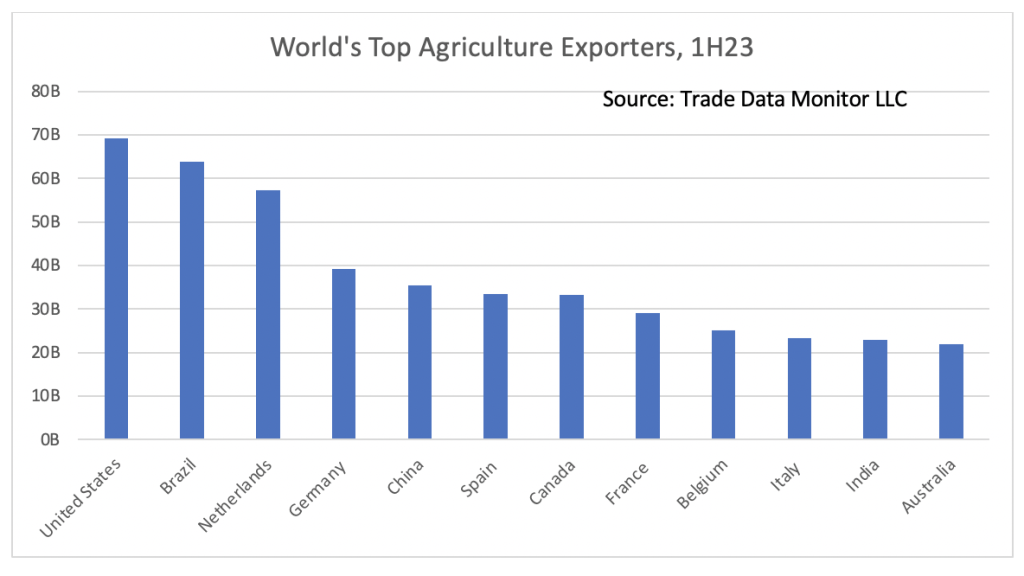As the deadline to renew the farm bill approaches on Sept. 30, the U.S. is still the world’s top food and agriculture exporter, but it’s lost a bit of ground this year to rivals.
Overall, U.S. food and agriculture exports declined 10.9% to $69.1 billion in the first half of 2023. By comparison, #2 Brazil’s exports increased 7.4% to $63.8 billion, #3 the Netherlands’ 7.2% to $57.3 billion, and #4 Germany’s 9.9% to $39.1 billion. Food and agriculture exports by fifth-ranked China fell 2.1% to $35.4 billion.
Shift in markets for soybeans, the U.S.’s number one agricultural export, account for a large portion of these swings. Brazil, Paraguay and Argentina are getting more aggressive in the market, and there’s been a domestic demand crush in the U.S.
Then there’s China, the U.S.’s top export market. U.S. food and agriculture exports to China dropped 8.6% to $12.5 billion in the first seven months of 2023, in part because of depressed demand for soybeans, dairy and beef. But the big culprit was cereals. The value of shipments dropped to $1.9 billion from $4.7 billion. U.S. meat exports to China fell 12.8% to $1.8 billion. U.S. exports of soybeans to China increased 36% to $7.3 billion, but that was in part because of an increase in prices. By quantity, U.S. soybean exports to China fell 1.2% to 76.2 million kg.
Overall, there’s been a lot of volatility in cereals exports around the world. Exports to Mexico fell 39.5% year-on-year in the first seven months of 2023 to 245.6 million kg. Deliveries to Haiti dropped 21.2% to 208.6 million kg. Exports to Japan dropped 20.3% to 183.9 million kg. There were some niche segments of growth. Shipments to Iraq rose from only 127,782 kg to 132 million kg.

The promise of U.S. agriculture is that potential national and product markets extend throughout the world. Here are some signs of hope in 2023:
- exports of meat to Mexico increased 12.6% to $2.4 billion during the first seven months of 2023.
- exports of vegetables and tubers to Canada rose 2.1% to $2 billion during the first seven months of 2023. Horticulture exports have bucked the trend of decline.
- exports of frozen and canned fruits and vegetables to Japan increased 12.2% to $346.2 million during the first seven months of 2023.
- exports to Italy increased 49.5% to $897.1 million during the first seven months of 2023, thanks to soybeans, fruits and nuts, and cereals.
- shipments to Germany rose 12.2% to $1.5 billion, and exports to Australia increased 10% to $543.1 million.


